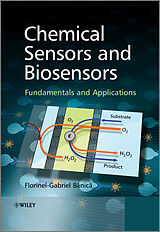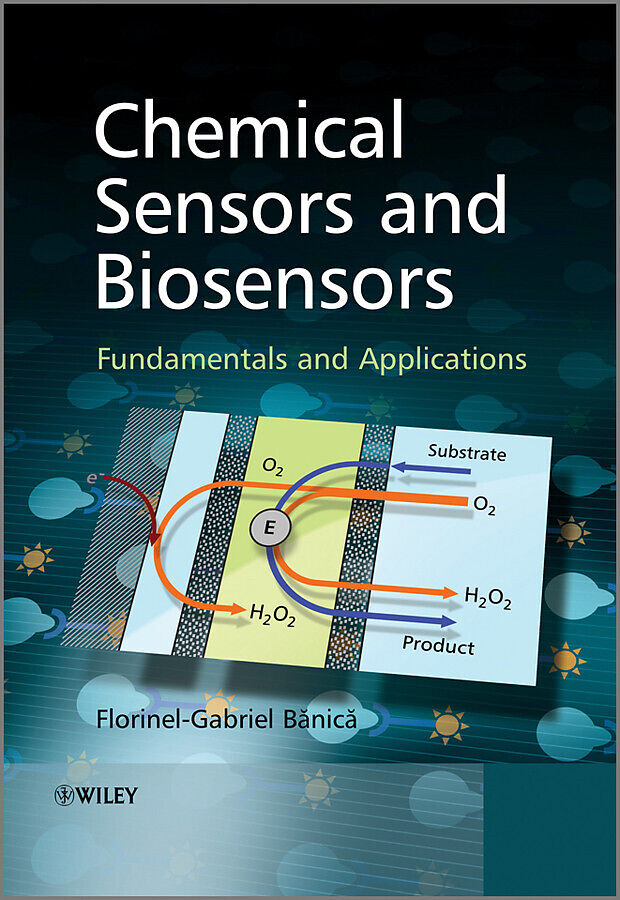Chemical Sensors and Biosensors
Format:
E-Book (EPUB)
EAN:
9781118354230
Untertitel:
Fundamentals and Applications
Genre:
Chemie
Autor:
Florinel-Gabriel Banica
Herausgeber:
Wiley
Anzahl Seiten:
576
Erscheinungsdatum:
15.08.2012
ISBN:
978-1-118-35423-0
Key features include:
* Self-assessment questions and exercises
* Chapters start with essential principles, then go on to address
more advanced topics
* More than 1300 references to direct the reader to key
literature and further reading
* Highly illustrated with 450 figures, including chemical
structures and reactions, functioning principles, constructive
details and response characteristics
Chemical sensors are self-contained analytical devices that
provide real-time information on chemical composition. A chemical
sensor integrates two distinct functions: recognition and
transduction. Such devices are widely used for a variety of
applications, including clinical analysis, environment monitoring
and monitoring of industrial processes. This text provides an
up-to-date survey of chemical sensor science and technology, with a
good balance between classical aspects and contemporary trends.
Topics covered include:
* Structure and properties of recognition materials and reagents,
including synthetic, biological and biomimetic materials,
microorganisms and whole-cells
* Physicochemical basis of various transduction methods
(electrical, thermal, electrochemical, optical, mechanical and
acoustic wave-based)
* Auxiliary materials used e.g. synthetic and natural polymers,
inorganic materials, semiconductors, carbon and metallic
materials
* properties and applications of advanced materials (particularly
nanomaterials) in the production of chemical sensors and
biosensors
* Advanced manufacturing methods
* Sensors obtained by combining particular transduction and
recognition methods
* Mathematical modeling of chemical sensor processes
Suitable as a textbook for graduate and final year undergraduate
students, and also for researchers in chemistry, biology, physics,
physiology, pharmacology and electronic engineering, this bookis
valuable to anyone interested in the field of chemical sensors and
biosensors.
Autorentext
Dr Florinel-Gabriel BANICA is Associate Professor at the Norwegian University of Science and Technology, Dept of Chemistry. Prior to this he was at the Technical University of Bucharest, Romania. Florin's research is focused on bioelectrochemistry, and functionalized materials for chemical sensor applications. He teaches undergraduate courses on analytical chemistry, instrumental analysis, electroanalytical chemistry and physical chemistry, and graduate courses on atomic spectrometry and chemical sensors and biosensors (on which this book is based).
Zusammenfassung
Key features include: Self-assessment questions and exercises Chapters start with essential principles, then go on to address more advanced topics More than 1300 references to direct the reader to key literature and further reading Highly illustrated with 450 figures, including chemical structures and reactions, functioning principles, constructive details and response characteristics Chemical sensors are self-contained analytical devices that provide real-time information on chemical composition. A chemical sensor integrates two distinct functions: recognition and transduction. Such devices are widely used for a variety of applications, including clinical analysis, environment monitoring and monitoring of industrial processes. This text provides an up-to-date survey of chemical sensor science and technology, with a good balance between classical aspects and contemporary trends. Topics covered include: Structure and properties of recognition materials and reagents, including synthetic, biological and biomimetic materials, microorganisms and whole-cells Physicochemical basis of various transduction methods (electrical, thermal, electrochemical, optical, mechanical and acoustic wave-based) Auxiliary materials used e.g. synthetic and natural polymers, inorganic materials, semiconductors, carbon and metallic materials properties and applications of advanced materials (particularly nanomaterials) in the production of chemical sensors and biosensors Advanced manufacturing methods Sensors obtained by combining particular transduction and recognition methods Mathematical modeling of chemical sensor processes Suitable as a textbook for graduate and final year undergraduate students, and also for researchers in chemistry, biology, physics, physiology, pharmacology and electronic engineering, this bookis valuable to anyone interested in the field of chemical sensors and biosensors.
Inhalt
1 What are Chemical Sensors? 1 2 Protein Structure and Properties 21 3 Enzymes and Enzymatic Sensors 28 4 Mathematical Modeling of Enzymatic Sensors 50 5 Materials and Methods in Chemical-Sensor Manufacturing 66 6 Affinity-Based Recognition 101 7 Nucleic Acids in Chemical Sensors 118 8 Nanomaterial Applications in Chemical Sensors 135 9 Thermochemical Sensors 157 10 Potentiometric Sensors 165 11 Chemical Sensors Based on Semiconductor Electronic Devices 217 12 Resistive Gas Sensors (Chemiresistors) 246 13 Dynamic Electrochemistry Transduction Methods 258 14 Amperometric Enzyme Sensors 314 15 Mathematical Modeling of Mediated Amperometric Enzyme Sensors 332 16 Electrochemical Affinity and Nucleic Acid Sensors 347 17 Electrical-Impedance-Based Sensors 367 18 Optical Sensors -- Fundamentals 404 19 Optical Sensors -- Applications 435 20 Nanomaterial Applications in Optical Transduction 454 21 Acoustic-Wave Sensors 473 22 Microcantilever Sensors 507 23 Chemical Sensors Based on Microorganisms, Living Cells and Tissues 518 Index 531

Leider konnten wir für diesen Artikel keine Preise ermitteln ...
billigbuch.ch sucht jetzt für Sie die besten Angebote ...
Die aktuellen Verkaufspreise von 3 Onlineshops werden in Realtime abgefragt.
Sie können das gewünschte Produkt anschliessend direkt beim Anbieter Ihrer Wahl bestellen.
Loading...
Die aktuellen Verkaufspreise von 3 Onlineshops werden in Realtime abgefragt.
Sie können das gewünschte Produkt anschliessend direkt beim Anbieter Ihrer Wahl bestellen.
| # | Onlineshop | Preis CHF | Versand CHF | Total CHF | ||
|---|---|---|---|---|---|---|
| 1 | Seller | 0.00 | 0.00 | 0.00 |
